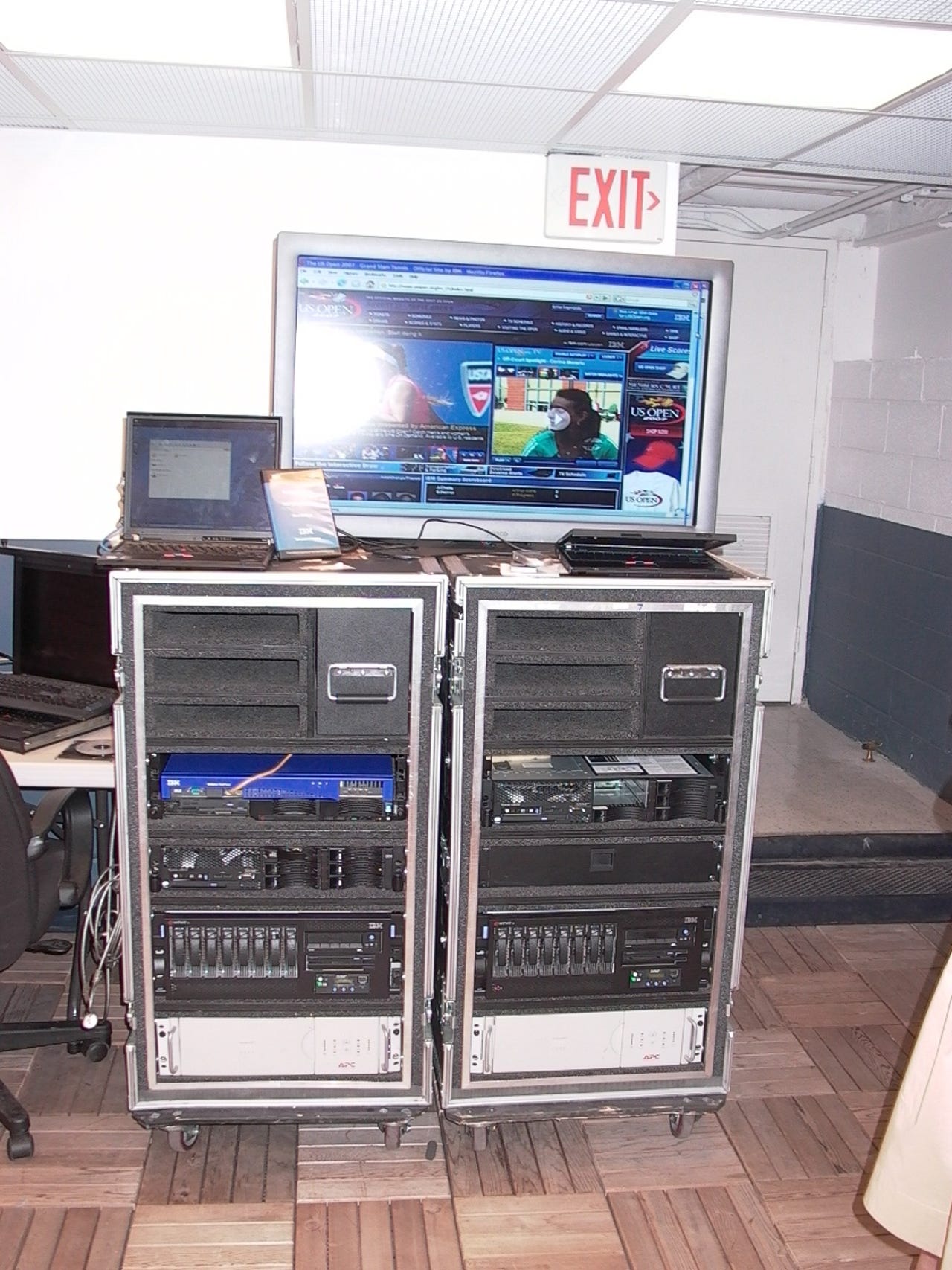Images: Follow the bouncing data at the U.S. Open

IBM will close out its 16th season running the U.S. Open's technology infrastructure. During that time, IBM has evolved from a Web-less infrastructure to one shuttles data around in real-time via service oriented architecture. Here's a look at the technology behind the U.S. Open. Follow the bouncing data.
Data from the U.S. Open flows from umpire calls and real-time scoring to video and statistics. This information is mashed up for consumer, player and media use. In many respects, the data flow at the U.S. Open begins with this handheld that is decidedly retro. Using custom Linux software and a Symbol handheld umpires keep score and shuttle the information to a scoring command center.
For instance, the scoring from this match--a wheelchair women's singles quarterfinal--is shuttled to IBM's nerve center for processing. The score is combined with other incoming data--such as serve speed via radar guns.
The scoring command center isn't much to look at. IBM eats its own IT dog food so these blades are of the Big Blue variety. IBM uses sporting events such as the U.S. Open, the PGA tour and a video deal with NFL Films to showcase and experiment with its technology. The blades pictured here run on Linux and AIX.
Video is critical to the U.S. Open. The media, players and television networks use IBM's information heavily. Here's an intranet screen showing live streaming video and the data that's coupled with it.
This machine is used by television producers to call up an endless array of charts to make the talking heads sound smart. The data is housed in a DB2 database.
These servers under the table aren’t all that flashy, but they are arguably the most important thing IBM has going at the U.S. Open. What do these servers do? They house the player voice system. Here's how it works. Players dial into a hotline, enter a pin number to find out who they play next, where they play and when. Biggest benefit: IBM's voice system provides an audit trail to ensure the player got the information. Simply put, no tennis pro can say the dog ate their racket.
The data collection is then coupled with editorial to feed the U.S. Open Web site, which sees big spikes in traffic and then essentially goes into hibernation when the tennis tournament is over.
Since IBM runs all four tennis grand slams it's critical that its software is broken into components of code that can be reused and tweaked. These modules rely on service oriented architecture and Websphere. This Slamtracker application pulls multiple components--a real-time scoreboard, schedules and serve speeds--and mashes them up to be manipulated by the user.
This SOA based approach results in an interesting mix of mashups. Here's a screen of a personalized U.S. Open screen that allows you to track your five favorite players. The WebSphere Message Broker acts as the enterprise service bus.

One thing that's notable about the 2007 U.S. Open relative to previous years is that the footprint is considerably smaller. This rack of blades essentially runs all of the publishing, editing, staging and scoring information on the U.S. Open Web site. IBM has gone to a virtualized environment for its grand slam operations and cut the number of servers used from 60 to 9 at the U.S. Open. This virtualization technology comes via IBM's Tivoli software.
Web hosting takes place at three geographically dispersed data centers. The P5 550 Express server is the workhorse of the group. The server runs both AIX and Linux on the same box. Here’s a look at the Web hosting dashboard.
IBM is also testing the WebSphere DataPower X150 Integration Appliance. The goal use XML to better publish information more efficiently. IBM calls the box a "SOA appliance."
Once all the information is cobbled together, the differentiation really comes from various packaging schemes. Players have access to an intranet to analyze their play. Another perk: IBM provides every player a DVD 20 to 30 minutes after his or her match. The DVD provides video and statistical analysis broken down by time. For instance, Andy Roddick can call up all of his second serves or deuce situations. With any luck Roddick may find a way to beat Roger Federer.